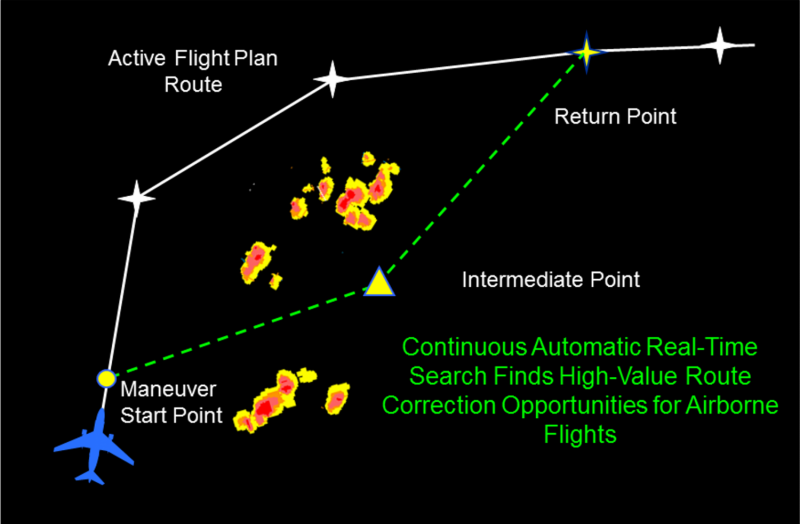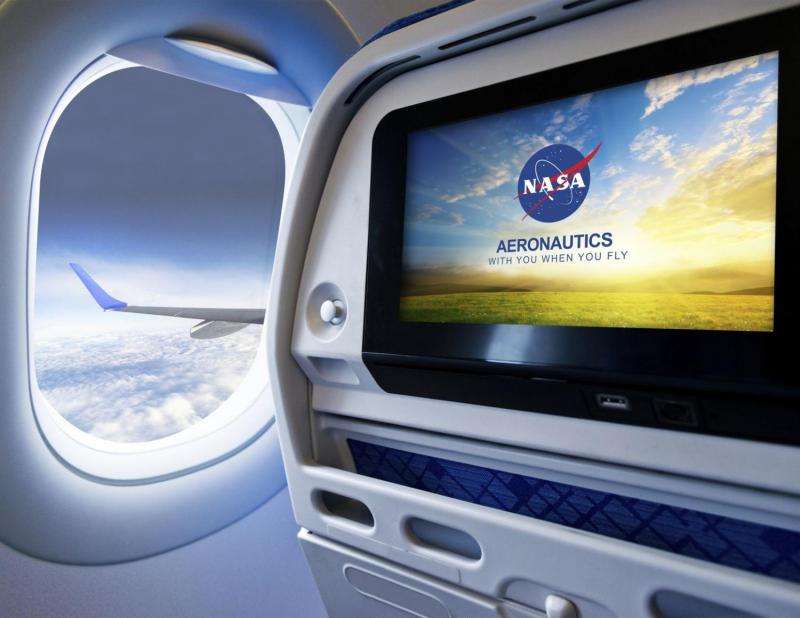NASA software to help avoid weather-related travel delays in the sky

More than 75,000 ticketholders will fill Levi's Stadium in Santa Clara, California, for Super Bowl 50, but more than one million people are expected to take part in activities nearby. A large portion of them will fly into the San Francisco Bay Area for the big game throughout the first week of February. NASA is working on technology to help future Super Bowl fans – and everyone else – avoid weather delays and arrive at their destinations safely and efficiently.
NASA's Ames Research Center in Silicon Valley is working with the FAA and industry partners to develop Dynamic Weather Routes, DWR, a tool that provides an automatic, continuous method of updating and analyzing the latest weather patterns and forecasts to provide information that can save time and fuel for aircraft which are already in flight.
Currently the FAA and airlines plan airplane flight routes according to weather information gathered and disseminated via teleconferences held every two hours. When weather is present or forecast along preferred flight routes, static weather avoidance routes are implemented, usually prior to take off. While aircraft are in flight, airline dispatchers and FAA traffic managers and controllers review weather updates and traffic flows to determine if and how flights may be rerouted to improve flow and reduce delay. This process is "slow and not technology-based," according to Leighton Quon, project manager for NASA's Airspace Technology Demonstrations at Ames.
NASA is field-testing DWR software that computes, updates and compares weather and air traffic data every 12 seconds and uses the information to find optional routes and to resolve possible air traffic conflicts. NASA's research shows that the software could potentially save 10 minutes per flight and, for some flights, up to 45 minutes.

"One of the challenges of bad weather is finding efficient routes," Quon said. "What better task to give a computer? The algorithms are running all of the time. When they find an improvement, a sound notifies air traffic personnel who evaluate and determine whether it's a good option they want to use."
Many travelers may be surprised how manual a process this system has remained. Until NASA's 10-person team began working on DWR in 2010, automation did not exist to help operators determine when weather avoidance routes could be modified or eliminated to reduce delay. Dealing with weather events can keep airline dispatchers and FAA air traffic controllers too busy to look for more efficient weather avoidance routes.
The software accommodates frequent and flexible changes, and plots ways to avoid congestion, traffic conflicts and airspace designated for "special" uses, which can wreak havoc for flight crews and for passengers.
"The static weather avoidance routes may not be well-tailored to the weather of the day," said Kapil Sheth, a NASA aerospace research engineer. "Large buffers compensate for forecast uncertainty of up to four hours ahead. When weather changes, it leaves an opportunity to save time and fuel."
Sheth said the software benefits both airlines and passengers. Calculating ways to shorten routes allows airlines to save money on fuel and allows pilots to make it to their next destinations. As a result, the costs and inconvenience involved in delayed flights are not passed on to fliers.
Ames was awarded a patent in October 2015 for the DWR ground-based trajectory software. Dave McNally, NASA's principal investigator for DWR, said an industry partner has successfully been field testing the DWR prototype for the last 2 ½ years in its integrated operations center, and an aerospace company has licensed the product. McNally said flights are already flying better routes based on advisories DWR is providing.
"I think this technology has tremendous potential and we've demonstrated that already with one partner," Sheth said. "All of the airline industry can benefit, but the biggest beneficiary is the flying public and that's what motivates us."
The more seamless air travel becomes, the less passengers will have to worry about keeping their flights safe and on time. NASA is committed to transforming aviation, as only NASA can, by dramatically reducing its environmental impact, improving efficiency while maintaining safety in more crowded skies, and paving the way to revolutionary aircraft shapes and propulsion. These improvements will help ensure future Super Bowl travelers can focus less on getting to the game, and more on cheering their teams to victory.
Provided by NASA



















